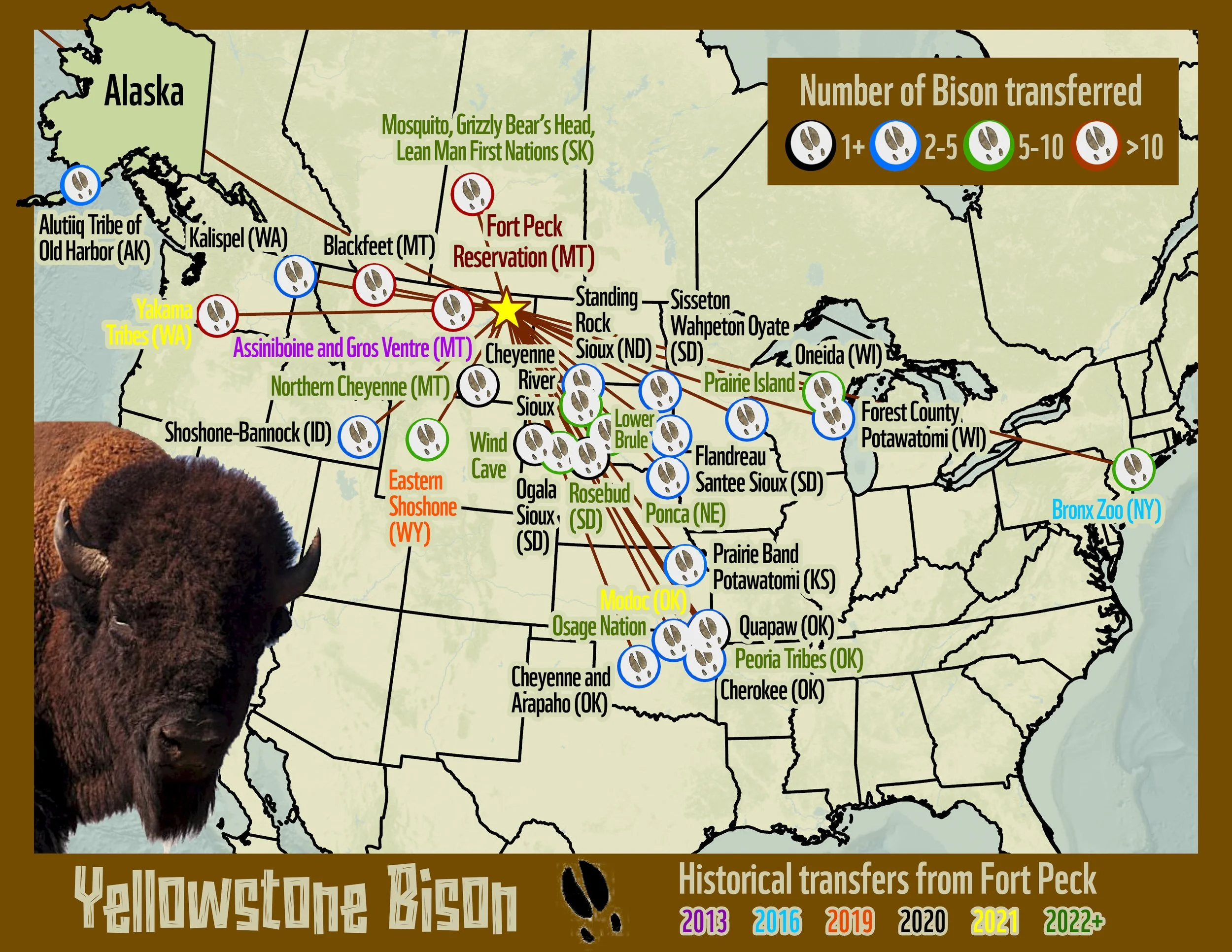History of the Buffalo
In the early nineteenth century great herds of buffalo, more appropriately called American bison, roamed the Great Plains. The buffalo was central to the Plains Indian economy and remained central to their spiritual world even as late as the twentieth century. At the end of the American Civil War (1861–1865), the U.S. military's attention turned again to American Indian relations.
The military was keenly aware that a substantial decline in buffalo would pose a serious setback to the Indians' ability to resist U.S. expansion. It would also spell an end to their seemingly nomadic lifestyle and force their move to reservations. By 1871 the slaughter of buffalo escalated further. A Pennsylvania tannery developed an industrial method to convert buffalo hides into inexpensive commercial leather for harnesses and machine belts. With hides worth between $1 and $3 each, hunters invaded the Plains. An estimated 15 million buffalo in 1865 decreased by 1872 to seven million.
By the 1890s less than a thousand buffalo remained in scattered areas, mostly on private ranches. Perhaps a scant twenty to fifty buffalo had sought refuge in Yellowstone National Park. To the Plains Indians the wasteful mass killing of the buffalo herds was perhaps the most disheartening act of all by the white intruders. Their economy was shattered and the native groups were forced to live on government handouts. The demise of the great buffalo herds also marked the transition of the extensive grasslands into agricultural production. The prairie itself eventually disappeared under the plow.
Taken from "Buffalo, Extermination of ." Gale Encyclopedia of U.S. Economic History.
The Yellowstone Buffalo
The buffalo at Yellowstone National Park are descendants of the small herd that migrated there in the late 1800s to seek refuge from hunters and the US Army. By the early 1900s though, poachers had reduced Yellowstone’s herd to about two dozen buffalo. The US Army, who administered Yellowstone National Park at the beginning of the 20th century, protected these buffalo from further poaching.
Around this time as well, small buffalo herds from private ranches were used to establish a herd in northern Yellowstone to help repopulate the Park. As the buffalo numbers increased, they began overgrazing the park. This led to Yellowstone reducing the number of buffalo that resided in the park. By 1968 though, herd reductions of bison ceased. It remained that way until the 2000’s when reductions resumed due to increasing buffalo numbers and litigation about them migrating into Montana.
After years of legal battles, the Fort Peck Tribes in 2012 were able to accept transfers buffalo from Yellowstone National Park to start their own herds and reintroduce the animals back to their ancestral lands of the Great Plains. Today, the the Fort Peck reservation is home to over 300 buffalo that are spread out across over 15,000 acres of prairie landscape.
Fort Peck is the lone Tribal site for managing and redistributing Yellowstone buffalo outside of the National Park. Fort Peck has received multiple transfers of Yellowstone buffalo saved from slaughter. Since then, the Tribes has transferred buffalo to 18 other Tribes and Alaska Native communities as well as to the Bronx Zoo New York with more to be shared in the future.
Historical transfers of bison from Fort Peck to partnering Tribes.
